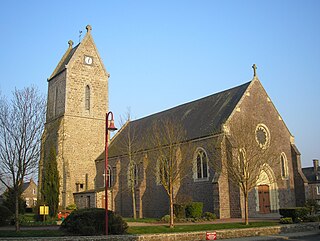Moyon Naga may refer to:
Moyon Naga may refer to:
Naga or NAGA may refer to:
Nagas may refer to the following:

Nagaland is a landlocked state in the north-eastern region of India. It is bordered by the Indian states of Arunachal Pradesh to the north, Assam to the west, Manipur to the south, and the Sagaing Region of Myanmar (Burma) to the east. Its capital city is Kohima and its largest city is the twin Chümoukedima–Dimapur. The state has an area of 16,579 square kilometres (6,401 sq mi) with a population of 1,980,602 as per the 2011 Census of India, making it one of the smallest states of India.

The Nagas are a divine, or semi-divine, race of half-human, half-serpent beings that reside in the netherworld (Patala), and can occasionally take human or part-human form, or are so depicted in art. A female naga is called a Nagi, or a Nagini. According to legend, they are the children of the sage Kashyapa and Kadru. Rituals devoted to these supernatural beings have been taking place throughout South Asia for at least 2,000 years. They are principally depicted in three forms: as entirely human with snakes on the heads and necks, as common serpents, or as half-human, half-snake beings in Hinduism, Buddhism, and Jainism.

Nagas are various ethnic groups native to northeastern India and northwestern Myanmar. The groups have similar cultures and traditions, and form the majority of population in the Indian state of Nagaland and Naga Self-Administered Zone of Myanmar (Burma); with significant populations in Manipur, Arunachal Pradesh and Assam in India; Sagaing Region and Kachin State in Myanmar.
Nagin may refer to:
South Asian ethnic groups are an ethnolinguistic grouping of the diverse populations of South Asia, including the nations of Bangladesh, Bhutan, India, Maldives, Nepal, Pakistan, and Sri Lanka. While Afghanistan is variously considered to be a part of both Central Asia and South Asia, Afghans are generally not included among South Asians.
The Kuki-Chin languages are a branch of 50 or so Sino-Tibetan languages spoken in northeastern India, western Myanmar and southeastern Bangladesh. Most speakers of these languages are known as Mizo in Mizoram and Manipur. Also, as Kukī in Assamese and Bengali and as Chin in Burmese; some also identify as Zomi. Mizo is the most widely spoken of the Kuki-Chin languages. The Kuki-Chin language has official status in both Chin State and Mizoram as Chin and Mizo respectively.

Subha Nagalakshmi Munchetty-Chendriah, also known as Naga Munchetty, is a British television presenter, newsreader and journalist. She is a regular presenter on BBC Breakfast. She is also a former presenter of BBC World News and BBC Two's weekday financial affairs programme Working Lunch.

Akkineni Naga Chaitanya known professionally as Naga Chaitanya is an Indian actor who primarily works in Telugu films. Chaitanya made his acting debut with Josh (2009), which won him Filmfare Award for Best Male Debut – South. He is a recipient of several awards including one Filmfare Award South and South Indian International Movie Award each.
Naga City may refer to these places in the Philippines:

Tangkhul is a Sino-Tibetan language of the Tangkhulic branch, spoken in 168 villages of Ukhrul district, Manipur, India. The term "Tangkhul" is derived from the Meitei language terms, "Tang" meaning "scarce" and "Khul" meaning "village" respectively. According to another theory, the term "Tangkhul" is derived from "Thankhul", meaning "Than village" in Meitei language.
Moyon is a Sino-Tibetan language of Southern Naga linguistic sub branch. It is spoken by the Moyon peoples in Manipur, India and in Burma.
Lui Ngai Ni is the seed-sowing festival celebrated by the Naga tribes of Manipur India. The festival heralds the season of seed sowing and marks the start of the year for the Nagas and the festival was declared a state holiday since 1988.

Moyon Villages is a commune in the department of Manche, northwestern France. The municipality was established on 1 January 2016 by merger of the former communes of Chevry, Le Mesnil-Opac and Moyon.
Central Tibeto-Burman or Central Trans-Himalayan is a proposed branch of the Sino-Tibetan language family proposed by Scott DeLancey (2015) on the basis of shared morphological evidence.
Southern Naga is a branch of Kuki-Chin-Naga languages.
The Moyon people, also known as Bujuur people or the Moyon Naga, are a Tibeto-Burmese ethnic group predominantly resides in the Northeast Indian state of Manipur and, some in Sagaing Region in Myanmar. They are listed as a Scheduled Tribe (STs) by India.